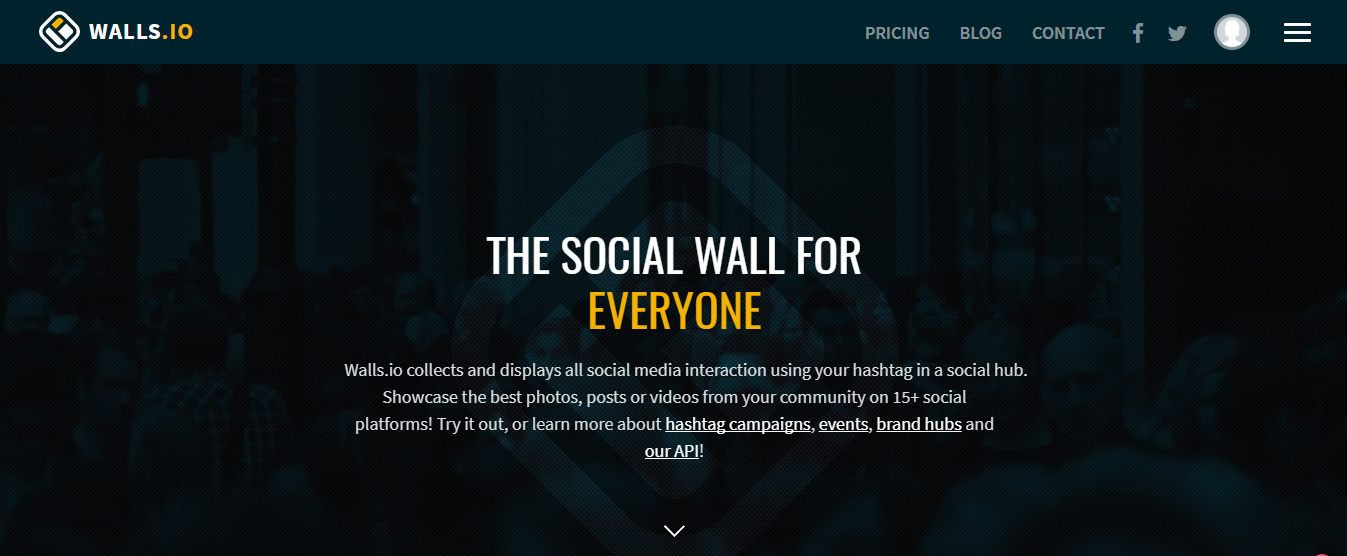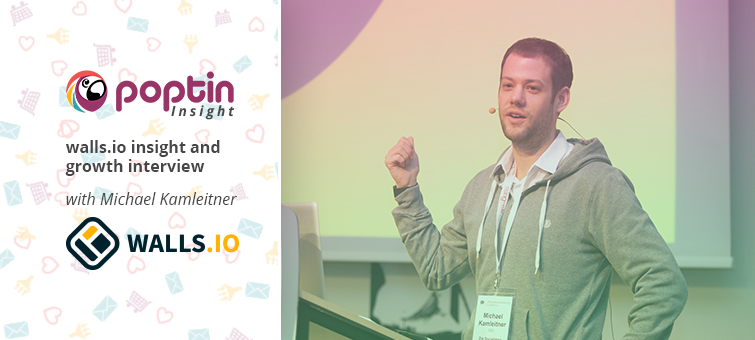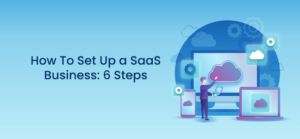Name: Michael Kamleitner
Position: CEO & Founder
Age: 39
What is your company called: Walls.io – The Social Wall for Everyone
Founded: 2014 (our company actually was founded 2010, but we started Walls.io only 4 years later).
How many people are on the team right now? 13
Where are you based? Vienna, Austria
Did you raise money? If not, how did you have money to build Walls.io?
Walls.io is 100% bootstrapped. Before starting to build our product, our team has been successfully working as a software agency, building custom social media marketing applications for various clients. The agency business not only provided us with the capital to fund the development of the Walls.io MVP, but it also granted us access to our initial customer base.

Can you tell us what Walls.io is and how you make money?
Walls.io is a social media hub that displays content from 15 social media platforms on physical displays, websites, widgets, apps – basically, everywhere you like. Or, as we say: Walls.io is the social wall for everyone! 😀 Use cases include displays at conferences, tradeshows, point-of-sale, websites and widgets for hashtag marketing, or deep integration through our API.
Walls.io is run on a Software-as-a-service (SaaS) subscription model, so our customers pay a monthly fee to run their social wall. We offer a 100% free option as well as a Pro (USD200/month) and Premium (USD500/month) plan. We also offer non-recurring event passes.
How did you get this idea?
At Walls.io we eat, breathe and sleep social media since almost a decade, so naturally, we loved when Twitterwalls first popped up at nerdy tech events like Barcamps etc. Outside the tech bubble (or “Web 2.0” as we used to call it back then) however, Twitter never was a big thing, so we decided to move the concept forward by adding support for other, more common platforms like Facebook. Hence, Walls.io was born! Today, years later, user-generated content plays a major role in marketing and corporate communication, a fact that opened Walls.io to many new use cases besides the obligatory event-business.
How long did you work on it before you launched? When did you see your first dollar?
The initial MVP only took us a few weeks to build (actually this was built entirely by myself – it was *very* crude, believe me;)), but it took us about a year until we first launched publicly. Since we had paid plans from the start, it took not more than a few days to sign up our first paying customer.
Who are your clients? What is your target market?
We’re happy to work with customers all around the globe (more than 50 countries, last time I’ve checked). The range of customers is super diverse – we have consumers using Walls.io to run a social media display at their wedding or party (https://walls.io/wedding-hashtag-walls), professional organisers of events and tradeshows (https://blog.walls.io/showcases/oecd-forum-live-video-wall), all kinds of educational services and universities (https://blog.walls.io/showcases/i-chose-umich-students-social-wall), marketing departments or agencies running hashtag campaigns on Walls.io (https://blog.walls.io/showcases/how-to-use-hashtags-in-pre-launch-campaigns) – there’s really no limit since most businesses can incorporate user-generated content and social media into their marketing strategies. On a personal note, working with such a diverse bunch of customers is what makes Walls.io so exciting to me!
Are you profitable? if not, when do you think you will get there?
Unfortunately, I can’t share our KPIs with you. But since you know we’re bootstrapped, a team of 13, and operating in our fourth year, it’s safe to assume we’re profitable! 😉
We do re-invest almost our entire profits, mostly by hiring new talent! Bootstrapping a company means constantly compromising on the size of your team – many roles which normally would be split among several people have to be carried out by one person, some functions even have to be neglected for a while. Still, I think it’s important to always have that “future orgchart” in your mind, and as soon as profits allow, fill the next, most-important box by hiring.
Number of active users: I’m happy to report that Walls.io currently powers thousands of social media walls and displays. We’re especially excited that we’ve broken 1mio sessions per month on our walls just this autumn!
How did you get your first 100 customers?
We landed our first few dozens of customers mainly due to our existing business relationships from the agency business. From there it was all organic growth, we’ve only started to invest in paid search more recently.
What are the 2-3 main distribution channels that work best for you? What channel didn’t work out for you?
We’re constantly testing out all marketing channels available to us, so we’re doing everything from paid search, content & social media marketing, sponsoring, referral programs, reviews, integrations, and partnerships etc. I’d say for us it’s the mix that makes it work. I wouldn’t cut on any of said channels. That said, we never did market to mass audiences (TV, print, billboards) – given we’re catering to very specific target groups that probably wouldn’t make much sense. Still, I’d like to see that Walls.io Superbowl spot one day! 😉
For the last year, paid search was probably the channel contributing the most to our growth. With a relatively moderate click price on our most important keywords, it was by far the quickest way to generate revenue. On the downside, social media displays are not a super-high-volume niche, so we might saturate that channel in the near future.
Content marketing, on the other hand, didn’t bring results that quickly. It really might take years to pay off, especially in a competitive industry like ours. There’s a ton of high quality, established content on social media marketing, so you’ll have a very hard time bringing in organic traffic here. The solution here is to laser focus on your target audience, so in our case, we don’t produce vanilla social media marketing content, but narrow down on our use cases (events, digital signage etc.). We see this approach working out, but again, it takes a lot of time (which especially we as bootstrappers don’t seem to have a lot 😉
Finally, we love to sponsor non-profit events, f.e. we offer free social walls to all barcamps (https://blog.walls.io/product/free-social-wall-for-barcamp). This is a great way to bring our product in front of our target audience, it really helped to establish our brand when we started!
Tell us 2-3 growth challenges you encountered recently (and if you have a strategy how to solve them.)
Since a chunk of our business is event-based, churn is a very serious concern for us. A customer buying Walls.io for a conference might cancel again after the event is done. Honestly: for the event use case, there’s really not much we can do about churn. We chose to do the opposite and embrace it, by offering special 72-hour event passes. This helps us to get a better picture of our different target audiences and offer additional features especially for this segment of customers in the future. So for us, fighting churn means improving the product and offering more specific pricing options for different audiences.
Also, we’re thinking a lot about how to make Walls.io more sticky, for example by integrating our widget in the event’s website before and after the event. Good news is, most events will return a year later! 🙂
Another challenge, as noted above, is saturation of certain channels like paid search. Again, there’s not much one can do but constantly tuning Google Adwords campaigns and exploring all possible alternative channels. F.e. we’re currently looking into review platforms like Capterra or G2Crowd, but it’s too early to say if this will be a viable channel for Walls.io.
Some of the tasks are not worth to do in-house. What do you outsource?
I feel there are many tasks you can outsource as you grow – content creation, lightweight web development (landing pages, never the core app), managing your Google Adwords etc. However, my experience is that it makes sense to pull most of those in-house once you can afford it – results will always be better.
Circling back to the bootstrapping situation – it makes sense to ruthlessly evaluate which skills your current team brings to the table, and then outsource those you currently don’t cover and can’t afford to hire in-house. For us, that clearly was content marketing. Luckily we met Andie, a great freelance writer & communication expert at just the right time. Not only did she help with positioning our content marketing strategy, but proved to be a reliable contributor now for years. An important prerequisite (not only for content marketing, but probably for all outsourcing) for outsourcing to make sense, is to couple it very tightly to your in-house team (regular calls/meetings, updating your freelance guys on everything that’s going on with product, marketing etc).
Of course, there are plenty of more low-involvement, self-contained tasks that are easier to outsource – we’ve done it successfully with translating (https://www.upwork.com), building landing pages (https://www.psd2html.com) and market research (again, Upwork).
What are the 3 tools you and your team can’t live without?
Wow, at Walls.io we’re big believers in SaaS, so the list of tools is very long (actually I’ve blogged about this recently – https://medium.com/@_subnet/tooltime-2017-our-monthly-saas-bill-revisited-48950b584e77). If you’d put a gun to my head and force me to pick three, it would probably be Github, Google Apps (Gmail, Docs, Drive) and Intercom.
Developing modern software without Github (software version control, issue management) is totally unimaginable, getting rid of Github would be a complete disaster. Google Apps is the backbone of our internal and external communication – I’ve been using Gmail since more than a decade and never looked back, Google Docs offers by far the best collaborative editing, and Drive ties it all together. Intercom finally is very deeply integrated in our customer support and marketing teams – we use it for live chat, customer support, and marketing automation. I’ve yet to see another tool that does such a good job of integrating as deeply into our business.
Tell us the biggest mistake you had through building and promoting your product and what you’ve learned from it.
Haha, one particularly embarrassing thing comes to my mind… just before last years holiday season, we’ve setup a 99% promotional discount code meant to be distributed to a handful of loyal friends & partners. Accidentally we’ve missed to setup the discount correctly, which brought it in effect for *all* purchases. Since it was just before we left for some well-deserved vacation, it took us a few days to notice and correct the mistake. I guess there are some very happy Walls.io customers now paying 1EUR/month for their social wall 😉 The learning of course is something software engineers figured out long ago, but most marketing people probably still have to: never deploy changes on a Friday (before a holiday), never without peer review, no matter how small it might seem!
If you had to start Walls.io today, what would you do differently?
Not much, but maybe I’d abandon the agency business much earlier in favor of focussing on Walls.io. Of course, Hindsight is 20/20 – back then it was a hard decision to refuse new client projects and the profit they would bring in, instead investing our slim cash reserves in building Walls.io.
Where do you see Walls.io in 5 years from now?
Hah, ask me where we’re in 1 year and I’ll have a hard time to tell you! 😉
Seriously, I hope we can move the concept of user-generated, social media content upstream. I want to see real-time, curated social displays at the biggest sport events in the world. Community opinion injected in TV shows and augmenting news portals. And marketing in general finding a more authentic and true tone by incorporating the voice of actual people. If Walls.io can help moving towards this, I think we did a great job!




